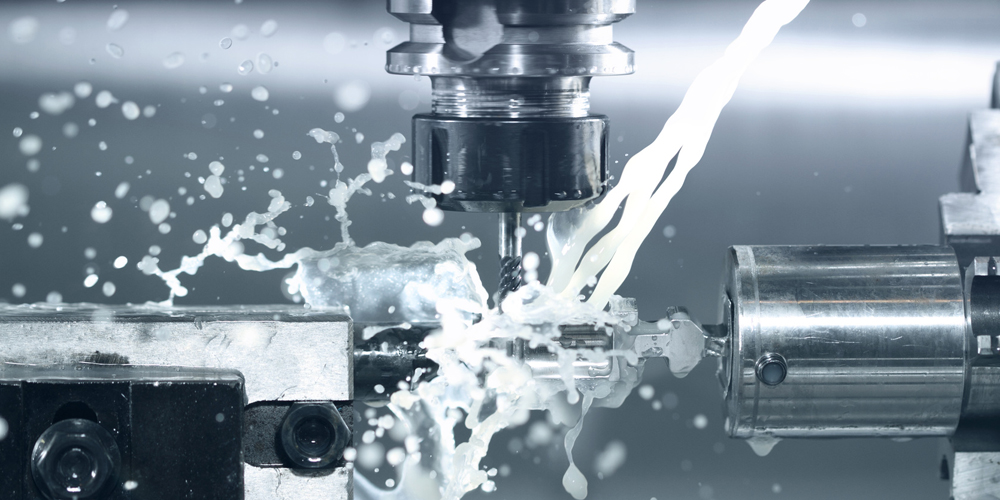FASTENER TERMINOLOGY
AF
An abbreviation for across Flats. Used in reference to the dimensions on hexagon head products. Also the Terminology for two sided flats on spindles. Tool size selection is described in terms of the measurement of the across flats.
Anaerobic Adhesive
An adhesive that sets when the air has been expelled. Used as a locking compound either on fasteners, or as a fixing, substituting a fastener.
Alloy Steel
Alloy steel is steel containing alloying elements, other than carbon, which have been added to achieve defined mechanical of physical properties and performance.
Annealed
A fastener is considered in the annealed state when it has been heat treated and cooled to make it malleable; that is, free of hardness caused by working or previous heat treatment.
Bearing Surface or Bearing Area
The bearing surface is the supporting or locating surface of a fastener with respect to the surface contact with the mating materials that are in contact. The loading of a fastener is usually through the bearing surface or area.
Blank
A blank is a fastener in a non-specific intermediate stage of manufacture.
Blind Rivet
A tubular rivet designed for use where only one side of the work-piece is accessible for insertion.
Body
The body of a threaded fastener is the unthreaded portion of the shank diameter.
Bolt
A bolt is a headed and externally partially threaded mechanical device inserted through a preformed hole and mated with a nut.
Broaching
Broaching is the process of removing metal by forcing a cutting tool, called a broach, to form a profile, which will duplicate the profile of the broaching tool.
BSI
British Standards Institution. The United Kingdom authority for technical standards.
Button Head
A button head as applied to threaded fasteners has a low rounded top surface with a large flat under head bearing surface.
Carbon Steel
Carbon steel is steel, which does not contain any substantial amounts of alloying elements, other than a defined measure of carbon.
Case Hardened
A case hardened fastener is a steel fastener having a surface that has been made harder than its core by a heat treatment process which infuses a thin carbon layer into the fasteners surface.
Camout
The installing power tool with a low applied end loading can cause the driver tool bit to 'slip' out of the recess during the installation. This is called Camout.
Chamfer Point
A chamfer point is a truncated cone point, the end of which is flat and perpendicular to the fastener axis. These points on threaded fasteners generally have included angles of 45° to 90° and a point diameter equal to or slightly less than the minor diameter of the thread. The chamfer point is intended to facilitate the ease of entry of fasteners into holes on assembly.
Cold Heading or Forging
Cold heading or forging is the process of forming ferrous and non-ferrous materials into specific configurations, without the use of applied heat to assist the formation process.
Cone Point
A cone point is a sharp conical point designed to provide locking or aligning functions in the assembly.
Countersink
A countersink is an internal chamfer or lead-in, into a preformed hole. The formation is carried out by a cutting or forming tool and provides a mating surface for a countersunk head type fastener.
Countersunk Head
The countersunk head has a flat top surface and a conical bearing surface with head angles of nominally 60°, 80° and 90°.
Cracks
Fractures passing through or across material grain boundaries without the inclusions of foreign elements.
Crest
The surface point, at which the thread joins the thread flanks.
Cross Drilled
A cross-drilled fastener is a fastener having one or more holes in the head or shank, at right angles to, and normally intersecting the axis of the fastener.
Cut Thread
A cut thread is a thread produced by removing material from the surface diameter with a form-cutting tool.
Decarburised
A fastener has a decarburised surface when the carbon content of the surface is lower than the carbon content of the fastener's core.
DIN
Deutsches Institut fur Mormung. The German Standards Institute for technical standards.
Eccentric and Eccentricity
Two surfaces of a fastener are eccentric when they do not have the same centre or axis. The amount by which the centres or axes are displaced from each other is called eccentricity. This is not to be confused with Total Indicator Reading (TIR).
Electroplating
Electroplating is carried out in a water-based solution containing a chemical compound of the metal to be deposited. The parts to be plated are immersed in the plating bath and an electrical current is passed through which causes the plating metal to precipitate out and to be deposited on the component parts in the plating bath.
Elongation
Longitudinal stretching of a fastener caused by a tensile load due either to tightening or to the external load.
Extruding
Extruding is the process of reducing the origin material size of some feature or diameter by forcing the material under pressure, through a die.
Facing
Facing is a machine operation on the head face or shoulder of a fastener to generate a flat surface.
Fastener
A fastener is a mechanical device for holding two or more bodies in definite positions.
Fatigue Strength
Under variations in applied stress a fastener experiences internal stretching that can cause rupture after a specific number of cycles. The number of cycles to failure for a specific load is the fatigue life of the fastener. In rigid assemblies preloading above the external service load should eliminate fatigue failure.
Ferrous
Relating to or containing iron.
Fillet
A fillet (radii) is the concave juncture at two intersecting surfaces.
Under Head Fillet
An under head fillet (radius) is the fillet at the juncture of the head and shank of a headed fastener.
Fillister Head
The Fillister head (USA), or Raised Cheese Head.
Finish
The term finish is commonly applied to the condition of the surface of fastener because of chemical or organic treatment, subsequent to the manufacture of the fastener. • The term finish is also applied to some types of fasteners to indicate the condition of a materials surface texture because of mechanical operations and the degree of precision achieved or required.
Fit
Fit is the general term used to signify the range of tolerance parameters. In effect the criteria for allowances and tolerances in the design of mating parts.
Forging
Forging is the process of forming a product by hammering or the displacement of material under force. When the material is forged below the re-crystallisation temperature it is said to be cold forged. When worked above the re-crystallisation temperature having been pre-heated, it said to have been hot forged.
Form of Thread
The profile of a thread in an axial plane for a length of one pitch.
Galvanising
Galvanising is the process of coating metal with molten zinc by hot dipping, Not to be confused with zinc plating which is an electrolytic process.
Gimlet Point
A gimlet point is a threaded point on a fastener, usually having a point angle of 45° to 50°. It is applied on woodscrews and Type AB self-tapping screws etc.
Grinding
Grinding is the process of removing material from the surface by the cutting action of a bonded abrasive wheel.
Ground Thread
A ground thread is a thread finished on the flanks by a grinding operation.
Hardenability
In a ferrous alloy, the property determines the depth and distribution of hardness included by quenching.
Head
The head of a fastener is the enlarged configuration, preformed on one end of a headed fastener, to provide a bearing surface.
Header
A fastener-heading machine is popularly referred to as a header, It is a forging machine operation in a horizontal position, as opposed to the vertical position.
Header Point
A header point is a chamfered point normally produced during the heading operation. The screw blank is chamfered in the first blow forging operation and the operation takes place prior to thread rolling. It is applied to fasteners in certain diameter sizes and lengths to aid insertion into the threaded hole.
Head Diameter
The head diameter is the diameter at the largest extremity of the head.
Headless Fastener
A headless threaded fastener is a fastener normally having a slot, recess, or socket in one end to drive the fastener into the assembly.
Hexagon
A polygon of six angles and six sides.
Hexagon Head
The hexagon head has a flat or indented top surface, six flat sides and a flat bearing surface.
Hexalobular Internal Drive
Hexalobular internal drive feature for bolts and screws is an international standard. the recess socket is hexalobular i.e.' a hexagon profile with rounded edges. There is also a hexalobular external drive system.
High Strength Fastener
A high strength fastener is a fastener having high tensile and shear strengths attained through combination of material types, work hardening and heat treatment.
Hydrogen Embrittlement Failures
Hydrogen Embrittlement is associated with fasteners made of carbon and alloy steels. It is only usually expected to be a risk for higher tensile fasteners above strength grade 8.8 / S or with a hardness value above 320HV. The failure is usually completed by a ductile fracture. The tougher the material, the more it is capable of resisting this phenomenon.
ISIR
Initial Sample Inspection Report. Submission of a sample batch or a consignment of components for approval.
Impact Test
A test to determine the energy absorbed in fracturing a test bar at high velocity. The test may be in tension or in bending, or it may be a notch test. The text creates multi axial stresses and the designate measurement for energy absorption of the material is Joules.
ISO
International Organisation for Standardisation. A worldwide federation of national standardisation bodies.
Knurling
Knurling is the process of producing a shallow serration on the material surface by means of a forming tool. Particularly associated with hexagon socket cap screws to provide grip for installing the first few threads of the fastener by hand.
Laps
Laps are minute surface defects caused by the folding over of metal lesions into the surface. Most commonly occurring during the thread rolling operation and usually due to slippage of the rolling dies, or worn dies.
Length
The length of a headed fastener is the distance from the intersection of the largest diameter of the head with the bearing surface to the extreme point, measured in a line parallel to the axis of the fastener.
Neck or Necking
Neck or Necking is used to define: A profiles form on a portion of the body of fasteners near the head to perform a defined function, such as preventing rotation. • A reduced diameter for a portion of the shank of a fastener, which is required for design or manufacturing reasons.
Non-Ferrous Metal
Metals of alloys without an appreciable amount of iron. Examples are aluminium, brass, copper, etc.
Non-Standard Fastener
A non-standard fastener is a fastener which differs in size, length, material or finish from established international standards.
Nut Thickness
Nut thickness is the distance from the top of the nut to the bearing surface, measured parallel to axis of the nut.
Pan Head
The pan head has a flat under head bearing surface and a shallow oval-shaped head profile.
Passivation
Passivation is the process of enhancing corrosion resistance of zinc and cadmium plated finished by conversion coating with usually a chromium bearing solution. it is also a process of dissolving ferrous particles and surface impurities from stainless steel by chemical means (normally a nitric acid dip) to produce a passive film on the surface of the fastener. The purpose is to improve the corrosion resistance of the surface.
Physical Properties
Physical Properties are the strength grade properties defining the basic characteristics of the material or fastener.
Pitch
Pitch is the distance; measured parallel to fastener axis between corresponding thread profile points on adjacent threads and on the same axial plane. For a fastener having a single thread, one full revolution of the screw or nut will advance a distance of twice the pitch length.
Pitch Diameter
The pitch diameter is an imaginary line that dissects the thread profile approximately by one-half. See Page 12.
Pitting
Corrosion exhibits itself in different forms and the commonest is pitting, which is local, limited in lateral extension but of considerable depth.
Plain Finish
Plain, as applied to the finish of fasteners, is used to indicate that the fastener has had no supplementary surface treatment, such as plating, coating etc, other than being oiled. Sometimes referred to as self-colour.
Plating
Plating is the executing of a metallic deposit on the surface of the fastener by electrolysis.
Plating Build Up
Plating build up is the term used to describe the condition of excessive plating on threads, edged or corners that on the other surfaces of the fastener.
Point Angle
The point angle is the included angle of the point.
Pointing
Pointing is a secondary machining operation consisting of cutting points on fastener blanks, which have not forge-pointed during the heading operation.
PPM
The acceptable level of defective "Parts Per Million agreed between buyer & seller.
Proof Load
A proof load is a specified test load, which a fastener must withstand without any indication of failure.
Proof Test
A proof test is any specified test required for a fastener to indicate that it is suitable for the purpose intended.
Quench Hardening
Hardening ferrous alloy steel austenitising and then cooling rapidly in oil or water, sufficient so that some, or all of the austenite, transforms to martensite.
Recessed Head
A recessed head is a formed indentation or recesses centred in the head of the fastener.
Recess Depth
The Recess depth is the distance measured parallel to the fastener axis from the intersection of the fastener head, with the maximum diameter of the recess to the bottom of the recess.
Rockwell Hardness Test
A measurement of hardness by determining the depth of penetration of a hardened calibrated steel ball into the hardened specimen under specified test conditions. The hardness reference number is a comparison scaling, relative to the depth of indentation. The higher the number the harder the material.
Rolled Thread
A rolled thread is a thread produced by the action of a thread rolling die which when pressed into the surface of a fastener blank displaces material in a radial direction.
Run-Out
Run-Out is a term frequently interconnected with eccentricity. Normally run-out refers to the amount of run-out with the outside surface of one reference surface of a fastener in comparison with the outside surface of another surface reference on the component. As such, it does include eccentricity, angularity and bow. The amount of run-out is usually expressed in terms of Total Indicator Reading (TIR).
Shank
The shank is that portion of a headed fastener, which lies between the head and the extreme point.
Shear Fastener
A shear fastener is a fastener whose primary function is to resist forces, which tend to shear it.
Shoulder
A shoulder is an enlarged portion of a threaded fastener or the shank of an unthreaded fastener.
Slotting
Slotting is the process of forming or cutting the slot on the head of a fastener during wither the primary or secondary operation.
SPC
Statistical Process Control. A statistical measuring concept to control certain defined dimensional features on a fastener or component. It also assists machine capability performance for accuracy and machine maintenance.
Socket Head
The socket head has a flat chamfered top surface with smooth or knurled cylindrical side surface and a flat bearing surface. A hexagon socket or spline is usually formed in the centre of the top surface.
Socket Depth
The socket depth is the distance measured parallel to the fastener axis from the socket head face to the extreme end of the socket. In socket head cap screws, the effective socket depth is most often specified as "Key Engagement as related to the hexagon wrench used for insertion.
Special Fastener
A special fastener is not a standard specification in respect of a recognised international standard.
Stainless Steel
Stainless steel is a corrosion resistant type of alloy steel, which contains a minimum of 12% chromium.
Standard Fastener
A standard fastener is a fastener, which conforms in all respects to recognised international standards.
Stress Area
Theoretical area in the thread section of a fastener over which the load is applied.
Stud
A stud is a fastener with no head, which has threads at both ends of the shank. Like a screw one end is inserted into an internally tapped hole and tightening a nut on the other end induces tension. If a stud is threaded its entire length and a nut is used on both ends to create tension, it serves the function of a bolt ... and is then classified as a stud bolt.
Surface Treatment
Surface treatment is any treatment, which changes the chemical,
physical or mechanical properties of a surface.
Surface Heat Treatment
Surface heat treatment is a process that improves the hardness or other mechanical property of the fastener.
Taper
Taper may refer to the geometry of the head, shank or some other feature of a fastener.
Temper
Temper is the state of a metal or alloy involving its structure and mechanical properties. Tempering and normalising counter the effects of prior processes.
Tensile Strength
Tensile strength is the maximum tension (pull or tautness) applied as a loading, that a fastener can support prior to, or coincidental with, its fracture.
Tension Fastener
A tension fastener is a fastener whose primary function is to resist forces, which tend to elongate it.
Thread
A thread is a triangle profile of uniform section in the form of a helix in the external or internal surface of a cylinder. This is known as a straight or parallel thread to distinguish it from a taper thread, which is formed on a cone or frustum.
Tolerance
A tolerance is the total permissable variation around a nominal size. The tolerance is the difference between the limits of size.
Torsion
Twisting moment of force applied to a fastener during tightening.
Toughness
Toughness is the ability of a material to absorb considerable energy without fracturing.
Twelve-Point Head
The twelve-point head has a flat or indented top surface, twenty-four short flat sides, and a circular collar at the bottom of the head and a flat bearing surface. It is sometimes called a "Double Hexagon Head.
Voids
Voids are internal fissures in ferrous materials.
Washer
A washer is a part having a centrally located hole. The washer performs various functions when assembles between the bearing surface of a fastener and the part being attached. Insulation, lubrication, increasing the bearing area over large clearance holes to improved stress distribution are just a few design attributed.
Washer Head
A washer head is a fastener head having a flanged collar under the head of the fastener to provide a bearing surface. Commonly known as a flange head, relative to the generic product type.
Washer Face
A washer face is a circular boss under the head of the fastener, providing a bearing surface. Applicable for a bolt or nut.
Width Across Corners
The width across corners of a hexagon, square or rectangular geometry and used as tightening media, are measured from corner to corner.
Width Across Flats
The width across flats of hexagon or square heads of fasteners is the distance measured perpendicular to the fastener axis across the flats of the fastener.
Work Hardening
Work Hardening is the increase in hardness and hence strength, resulting from plastic deformation at a temperature below the re-crystallisation range.
Yield Point
The stress necessary to produce elongation under load of 0.5% of the specimen's original length. Expressed in N.mm2.
Yield Strength
This is the measure of the resistance of a material to enter into a plasticity mode. Thereby, the elastic limit of the material has entered permanent deformation. It is usually at a point of 0.2% permanent strain.






